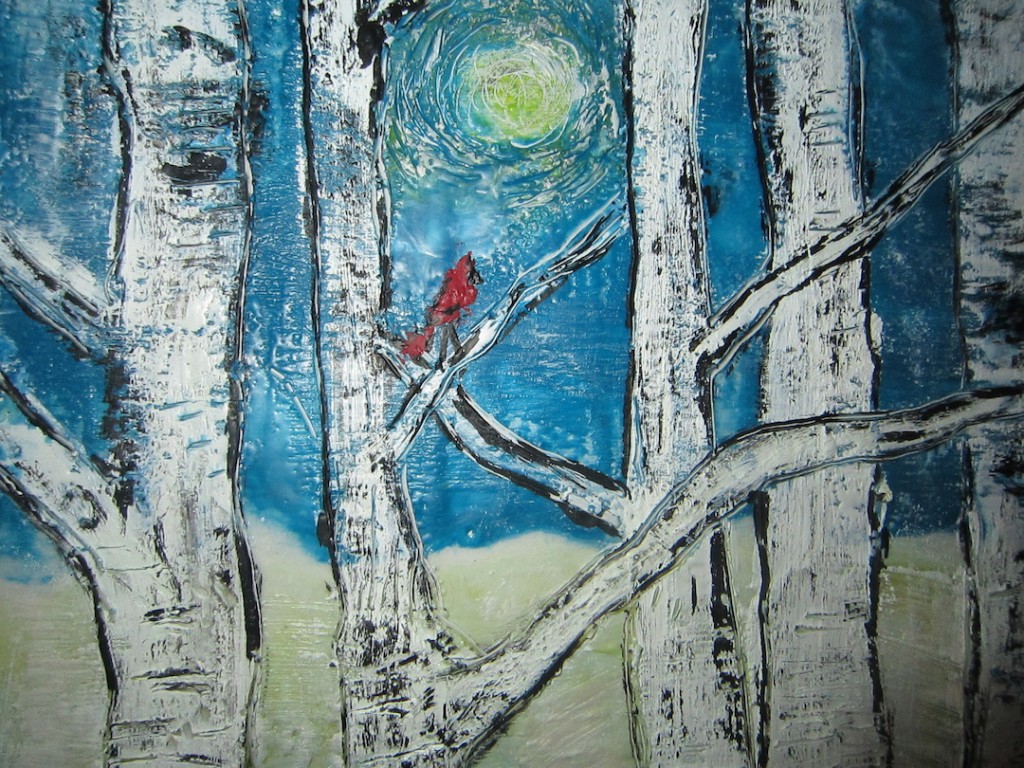Paw, paw, where’s my maw?
This weekend I got to play tree doctor as I performed an IVF procedure in our paw paw patch. Fortunately, the procedure was inexpensive, requiring only a plastic bag and a paint brush, and a knowledge of paw paw anatomy. Paw paws can be tricky to fertilize because they are too stinky for bees, giving off a carrion smell that attracts flies. The flies are supposed to pollinate them, but haven’t been doing a great job. Since our trees haven’t borne any fruit yet, I decided to step in.

Paw paws have an interesting developmental life cycle. When the flowers bloom in the spring, they start out as females. Note the stigma in the middle, which is part of the female anatomy.

After a few weeks, the female flowers morph into males,
becoming “hairy” with a coat of pollen.
The procedure was pretty straightforward: I would take some of the flaky pollen from the male flower of one tree and transplant it to the stigma of the female flower of another tree. Fortunately, I had a few male and female flowers on each tree.
Pretty soon I identified my first male donor. He was ready to go and didn’t need any priming.

My assistant handed me a plastic bag, and I began flaking the pollen off the male flower with a paintbrush, letting the pollen flakes fall into the plastic bag.

Then I went to a neighboring tree to find a female flower. “That’s a very healthy stamen you have, Ms. Paw Paw,” I said reassuringly.

With my artist’s brush I dabbed on the pollen flakes and gently applied them to the stigma of the female plant. We’ll see if anything bears fruit. It’s just a matter of time now…
Birches
Nature is my first love and main source of inspiration. Lately I’ve been trying to express this in paintings. Bored with watercolors, I recently decided to give encaustic painting a try. This is an ancient form of art using hot melted wax with added pigments, and has a very interesting history. The ancient Greeks used beeswax to seal their warships, and it was only a matter of time before they started painting fancy portraits. Check out the Fayum Mummy Potraits from Greco-Roman Egypt. It was a relatively obscure medium until Jasper Johns repopularized it in the 20th century.
This weekend I attended an excellent encaustic workshop at the Durham Arts Council. We spent the first couple of hours learning the ins and outs of encaustic painting. Working off hot pancake griddles, we dipped our brushes in cans of melted beeswax and slopped the first coat on our canvases. For each layer of wax that we applied, we had to fuse it to the canvas using small blowtorches. I mixed the wax with the special encaustic paints right on the griddle. One of the biggest challenges is that the wax tends to harden as soon as it hits the canvas.
I knew exactly what nature scene I had in mind: a forest of birch trees in the snow. Lately I’ve been obssesed with birches. I’m sure Robert Frost would approve. I knew this painting would fit nicely in the jewel-tone blue of our living room. By the end of the day I was pleased with the results.
I realized this was a perfect medium for my nature portraits. The colors were more vibrant than those in my watercolor paintings. The wax layering created an amazing sense of texture too. I had lots of fun creating the dark horizontal lines you always see on birch trees, also known as lenticels. For this, I took an engraving tool and cut right down to the canvas, filling the grooved lines with black ink.
What to paint next?

